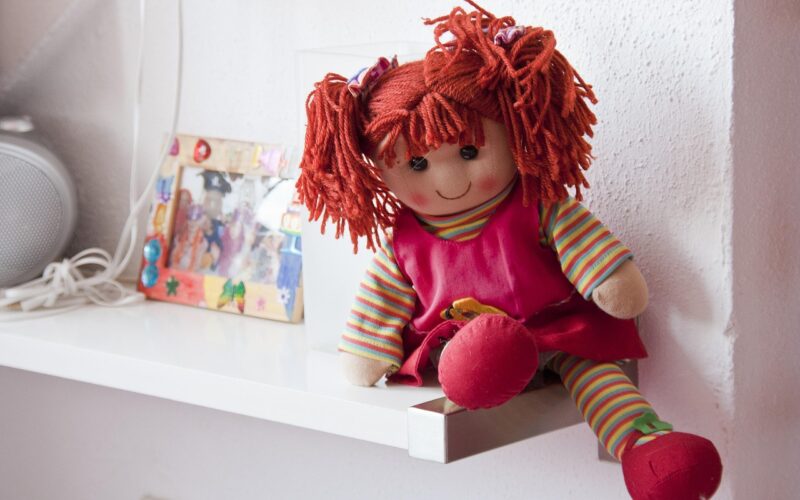When you hear the words “toy” and “doll,” you might think they’re the same thing. After all, kids play with both.
But these items have some key differences that set them apart.
A doll is specifically a model of a human being or humanoid figure, while a toy is any object designed for play and can include dolls, cars, games, balls, and many other items.
Many people use these terms interchangeably, but it’s helpful to understand that all dolls are toys, but not all toys are dolls.
Think of it like the relationship between squares and rectangles. When shopping for children or collectors, knowing this distinction can help you find exactly what you’re looking for.
The line between dolls and other toy figures can sometimes blur.
For example, action figures are often marketed differently than dolls, though they share many similarities.
The dictionary definition of a doll typically refers to “a small model of a human figure,” but many collectors and enthusiasts have their own personal definitions that go beyond this simple explanation.
Defining A Toy
A toy is any object designed primarily for play. Toys can be small objects like miniature cars, planes, or musical instruments that children use for entertainment. They come in countless forms and serve various purposes beyond simple amusement.
Toys often help children develop important skills. They can improve motor coordination, cognitive abilities, and social interactions through play. Many toys are designed with specific age groups and developmental stages in mind.
The category of toys is quite broad and inclusive. As Collins Dictionary notes, toys include dolls, model cars, balls, games, and many other playthings. In fact, almost any object that’s primarily used for play can be considered a toy.
Toys can be categorized in multiple ways:
- By age group: infant toys, toddler toys, etc.
- By material: plastic, wooden, plush, etc.
- By purpose: educational, recreational, collectible
- By complexity: simple rattles vs. electronic gadgets
Modern toys often incorporate technology, with electronic components that make sounds, move, or interact with the child. Traditional toys like building blocks, toy animals, and board games remain popular despite technological advances.
Importantly, not all playthings are toys in the strictest sense. Sports equipment, playground structures, and certain electronic devices might be used for play but aren’t typically classified as toys.
Defining A Doll
A doll is specifically a model of a human or humanoid character, often created to resemble people. While all dolls can be considered toys, not all toys are dolls.
The primary characteristic of a doll is its human-like appearance. Dolls typically have faces, limbs, and bodies that mimic human proportions, though they may be stylized or cartoonish.
Some people define dolls by their movable joints, suggesting that figures without articulation might better be called figurines. However, this definition isn’t universal.
Dolls serve different purposes across cultures:
- Play objects for children
- Collectible items for adults
- Cultural artifacts in traditional ceremonies
- Religious symbols in various practices
Historically, dolls have been used in traditional religious rituals and continue to hold cultural significance beyond mere playthings.
The term “doll” has also taken on metaphorical meanings. In some communities, it’s used as a term for people who present in certain ways, particularly referring to simulation or imitation.
At its most basic definition, a doll can be described as a toy resembling a small baby or person, setting it apart from other toys like model cars, stuffed animals, or games.
Key Differences Between Toys And Dolls
Toys and dolls are often confused with one another, but they have distinct characteristics that set them apart. Toys are broader categories of playthings, while dolls are a specific type of toy.
The most fundamental difference is that a doll is typically a model of a human being, whereas toys can represent anything – vehicles, animals, buildings, or abstract objects.
Purpose and Design:
- Dolls: Primarily represent people or humanoid characters
- Toys: Can be anything meant for play and entertainment
Dolls usually have distinguishing features such as hair that isn’t sculpted on and removable clothes. Action figures, while similar to dolls, are often marketed differently.
Relationship Between Toys and Dolls:
| Aspect | Toys | Dolls |
|---|---|---|
| Scope | Broader category | Specific type |
| Representation | Any object | Usually human figures |
| Examples | Cars, blocks, balls, dolls | Barbie, Cabbage Patch Kids |
A simple way to understand this relationship: Most dolls are toys, but not all toys are dolls. Dolls form a subset within the larger toy category.
The distinction between action figures and dolls often comes down to marketing rather than actual design differences. Action figures are typically targeted toward boys, while traditional dolls are marketed to girls.
Conclusion
Toys and dolls are both cherished childhood items, but they serve different purposes. A doll is specifically a model of a human being, while a toy is any object designed for play.
Dolls offer unique developmental benefits that set them apart from other toys. They help children develop language and social skills during crucial early years.
The distinction between dolls and action figures often comes down to cultural narratives. Marketing and social expectations have created artificial boundaries between these similar playthings.
Research shows that doll play activates brain regions associated with empathy and emotional understanding. This makes dolls particularly valuable for social-emotional development.
Understanding these differences helps parents make informed choices about the playthings they provide for their children. Both toys and dolls have their place in a well-rounded play experience that supports various aspects of child development.








